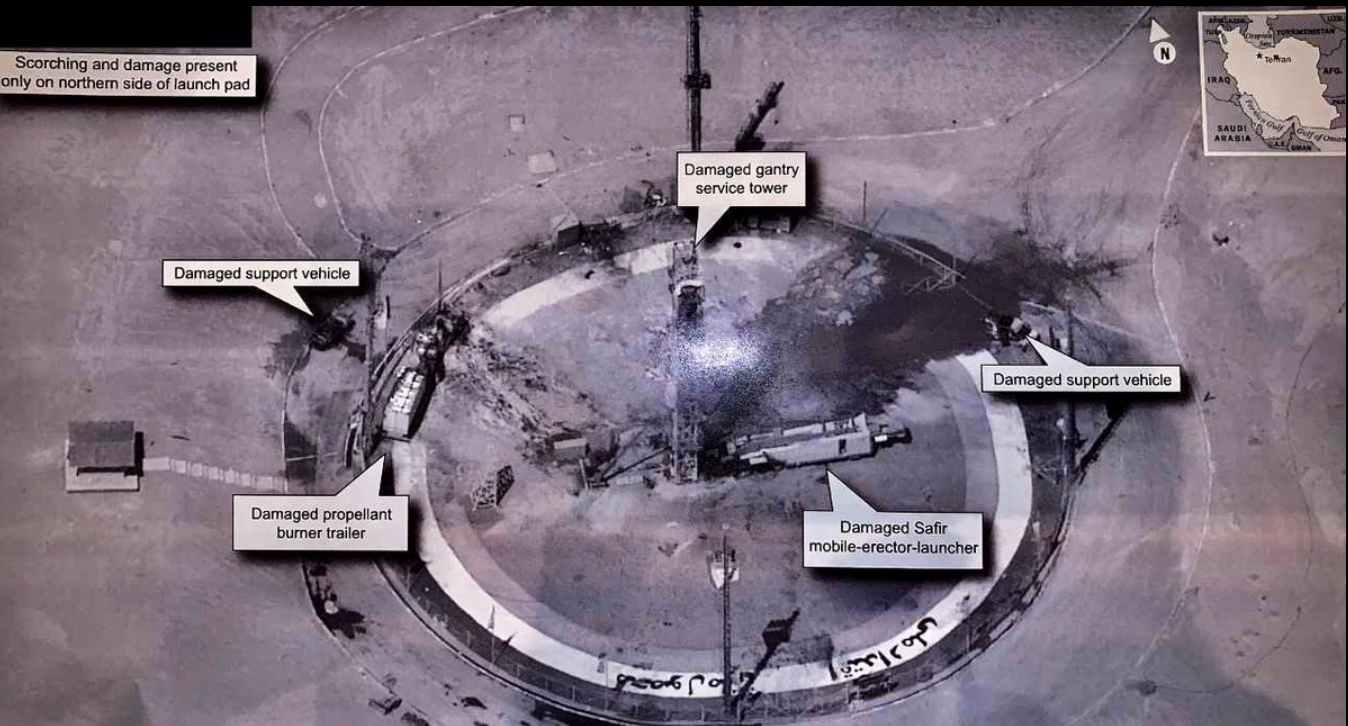The KH-11 KENNEN (later renamed CRYSTAL, then Evolved Enhanced CRYSTAL System, and codenamed 1010 and Key Hole) is a type of reconnaissance satellite first launched by the American National Reconnaissance Office in December 1976. Manufactured by Lockheed in Sunnyvale, California, the KH-11 was the first American spy satellite to use electro-optical digital imaging, and so offer real-time optical observations. Later KH-11 satellites have been referred to by outside observers as KH-11B or KH-12, and by the names "Advanced KENNEN", "Improved Crystal" and "Ikon". Official budget documents refer to the latest generation of electro-optical satellites as Evolved Enhanced CRYSTAL System. The Key Hole series was officially discontinued in favor of a random numbering scheme after repeated public references to KH-7 Gambit, KH-8 Gambit-3, KH-9 Hexagon, and KH-11 satellites. The capabilities of the KH-11 are highly classified, as are images they produce. The satellites are believed to have been the source of some imagery of the Soviet Union and China made public in 1997; images of Sudan and Afghanistan made public in 1998 related to the response to the 1998 U.S. embassy bombings; and a 2019 photo, revealed by President Donald Trump, of a failed Iranian rocket launch.
- electro-optical
- crystal
- kh-11
1. Program History and Logistics
The Film Read-Out GAMBIT (FROG) served as NRO Program A's competitor to NRO Program B's initial electro-optical imagery (EOI) satellite.[1] After a precursor EOI study with the codeword Zoster, President Nixon on 23 September 1971 approved the development of an EOI satellite under the initial codeword Zaman.[2] In November 1971, this codeword was changed to Kennen, which is Middle English for "to perceive."[3][4]
Data is transmitted through a network of communications satellites; the Satellite Data System.[5] The initial ground station for the processing of the electro-optical imaging was a secret National Reconnaissance Office facility in Area 58, later confirmed to be located in Fort Belvoir.[6][7]
In 1999, NRO selected Boeing as the prime contractor for the Future Imagery Architecture (FIA) program, aimed at replacing the KH-11 satellites by a more cost effective constellation of smaller, and also more capable reconnaissance satellites. After the failure of the FIA in 2005, NRO ordered from Lockheed two additional legacy hardware KH-11s.[8] USA-224, the first of these two, was launched in early 2011 two years ahead of the initial schedule estimate.[9]
In January 2011, NRO offered NASA two space optical systems with 2.4 m diameter primary mirrors, similar to the Hubble Space Telescope, yet with steerable secondary mirrors and shorter focal length resulting in a wider field of view. These could either be spare hardware from the KH-11 program, or optics from the cancelled FIA program.[10][11] The satellites were reportedly stored in a clean room facility at ITT Exelis in Rochester, New York.[12][13]
2. Design
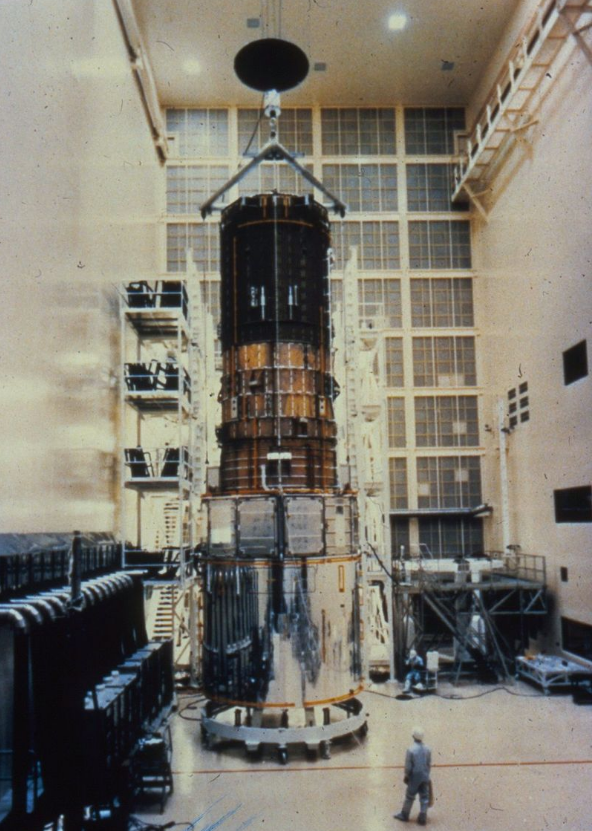
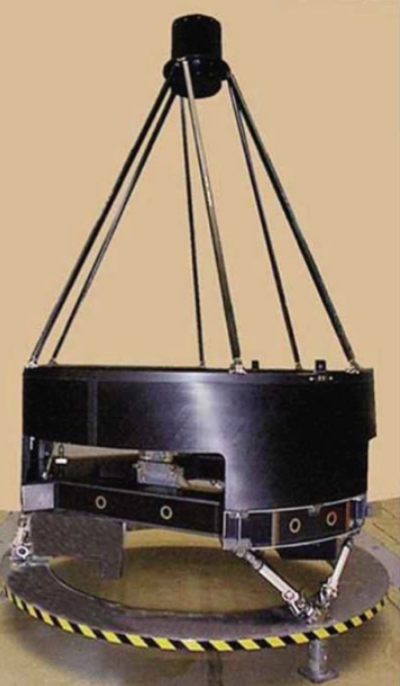
Size and mass
KH-11s are believed to resemble the Hubble Space Telescope in size and shape, as the satellites were shipped in similar containers. Their length is believed to be 19.5 meters, with a diameter of up to 3 meters.[5][14] A NASA history of the Hubble,[15] in discussing the reasons for switching from a 3-meter main mirror to a 2.4-meter design, states: "In addition, changing to a 2.4-meter mirror would lessen fabrication costs by using manufacturing technologies developed for military spy satellites."
Different versions of the KH-11 vary in mass. Early KH-11s were reported to be comparable in mass to the KH-9 Hexagon,[16] i.e. about 12,000 kg. Later blocks are believed to have a mass of around 17,000 kg[17] to 19,600 kg.[5][18]
Propulsion module
It has been reported that KH-11s are equipped with a hydrazine-powered propulsion system for orbital adjustments. In order to increase the orbital lifetime of KH-11s, plans existed for refuelling the propulsion module during service visits by the Space Shuttle.[16] It has been speculated that the propulsion module is related to Lockheed's Satellite Support Bus (SSB), which had been derived from the Satellite Control Section (SCS) developed by Lockheed for KH-9.[19]
Optical Telescope Assembly
A CIA history states that the primary mirror on the first KH-11s measured 2.34 meters, but sizes increased in later versions.[5] NRO led the development of a computer controlled mirror polishing technique, which was subsequently also used for the polishing of the primary mirror of the Hubble Space Telescope.[20]
Later satellites had larger mirrors, with a diameter of around 2.9–3.1 m[21] Jane's Defence Weekly indicates that the secondary mirror in the Cassegrain reflecting telescope system could be moved, allowing images to be taken from angles unusual for a satellite. Also, there are indications that the satellite can take images every five seconds.
Imaging sensors and camera modes
The initial KH-11 camera system offered frame and strip modes.[22] The focal plane was equipped with an array of light-sensitive diodes, which converted brightness values to electrical signals. The packaging density was sufficiently high (several hundred diodes per inch) to match the ground sample distance of the CORONA satellites. The recorded digital signal was transmitted to a ground station in near real time, and written to film by means of a laser in order to recreate the recorded image.[23] KH-11 Block II might have been the first reconnaissance satellite equipped for imaging with a 800 × 800 pixels charge-coupled device (CCD).[24] Later block satellites may include signals intelligence capabilities and greater sensitivity in broader light spectrums (probably into infrared).[25]
Communications
Communication to and data downloads from KH-11 satellites are routed through a constellation of communication relay satellites in higher orbits. The initial communications relay payload is believed to have operated at a frequency of 60 GHz, as radio emission at this frequency is blocked by Earth's atmosphere, and thus not detectable from the ground. Launch of the initial two Satellite Data System satellites occurred in June and August 1976, i.e. ahead of the first launch of a KH-11 satellite in late 1976.[26]
Resolution and ground sample distance
A perfect 2.4 m mirror observing in the visual (i.e. at a wavelength of 500 nm) has a diffraction limited resolution of around 0.05 arcsec, which from an orbital altitude of 250 km corresponds to a ground sample distance of 0.06 m (6 cm, 2.4 inches). Operational resolution should be worse due to effects of the atmospheric turbulence.[27] Astronomer Clifford Stoll estimates that such a telescope could resolve up to "a couple inches. Not quite good enough to recognize a face".[28]
In the 2012 National Reconnaissance Office space telescope donation to NASA, the two Optical Telescope Assemblies (OTA) were suspected to be KH-11 series "extra hardware", but were later attributed to the Future Imaging Architecture program. The donated OTAs feature a three-mirror anastigmat (TMA) optical design, without the tertiary mirror. The f/1.2 primary has a diameter of 2.4 m, and is refocused by the secondary to give an overall f/8 focal ratio, making the optical telescope assembly shorter than that of HST. With the addition of the tertiary mirror, this will produce a much wider field than Hubble's 2-mirror f/24 Ritchey–Chrétien optical design, making it a potentially ideal observatory for dark energy or other astrophysics surveys. The secondary mirror is mounted on a hexapod to increase the side-viewing and ground scanning ability for the originally intended reconnaissance mission.[12][13][29]
KH-11 generations
Five generations of U.S. electro-optical reconnaissance have been identified:[30][31]
Block I
Block I refer to the original KH-11 satellite, of which five were launched between 19 December 1976 and 17 November 1982.
Block II
The three Block II satellites are in the open literature referred to as KH-11B, the alleged DRAGON codename, or Crystal, and are believed to be capable of taking infrared images in addition to optical observations.[32] The first or second Block II satellite was lost in a launch failure.[31]
Block III
Four Block III satellites, commonly called KH-12 or Improved Crystal were launched between November 1992 and October 2001. The name "Improved Crystal" refers to the "Improved Metric CRYSTAL System" (IMCS). Metric describes the capability to fix Datum references (markings) in an image relative to the World Geodetic System for mapping purposes.[33][34] Another improvement was an eightfold increase in the download rate compared to earlier models to facilitate improved real-time access and increased area coverage.[35] From Block III on, the typical lifetime of the satellites increased to about 15 years, possibly related to a higher lift-off mass, which facilitates larger fuel reserves for countering atmospheric drag.[36]
Block IV
Three electro-optical satellites launched in October 2005, January 2011, and August 2013 are attributed to Block IV.
Block V
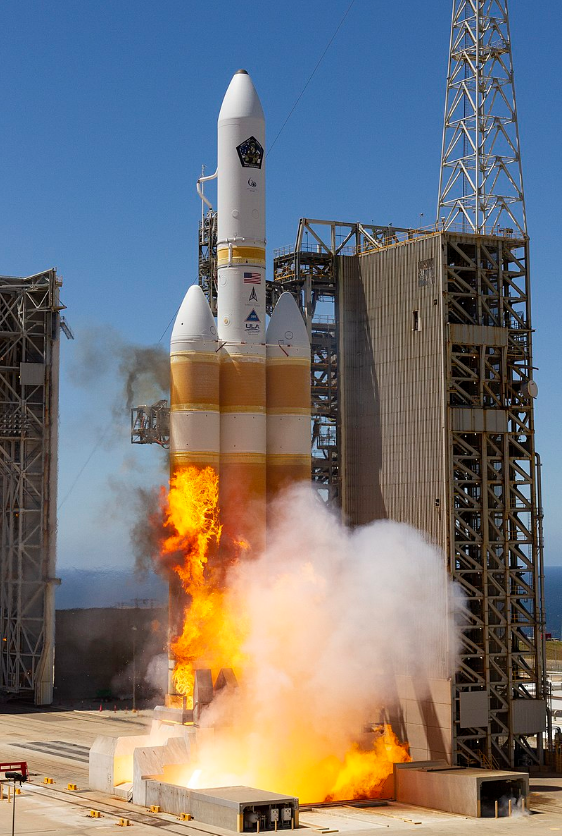
A new generation of clandestine communications satellites launched to inclined geosynchronous orbits have led to speculations that these are in support of Block V electro-optical satellites scheduled for launch in late 2018 (NROL-71) and 2021 (NROL-82).[37] The two satellites have been built by Lockheed Martin Space Systems, have a primary mirror with a diameter of 2.4 m, and are evolutionary upgrades to the previous blocks built by Lockheed.[38]
Based on the published hazard areas for the launch, an orbital inclination of 74° has been deduced for NROL-71. This could indicate that NROL-71 is targeted for a Type II Multi Sun-Synchronous Orbit,[39] which would enable the satellite to study the ground at a range of local hour effects (shadow direction and length, daily activities, etc.).[40][41]
3. Derivatives
The Misty satellite is believed to have been derived from the KH-11, but modified to make it invisible to radar, and hard to detect visually. The first Misty satellite, USA-53, was released by the Space Shuttle Atlantis on mission STS-36. The USA-144 satellite, launched on 22 May 1999 by a Titan IVB from Vandenberg Air Force Base may have been a second Misty satellite,[42] or an Enhanced Imaging System spacecraft. The satellites are sometimes identified as KH-12s.
4. Compromises
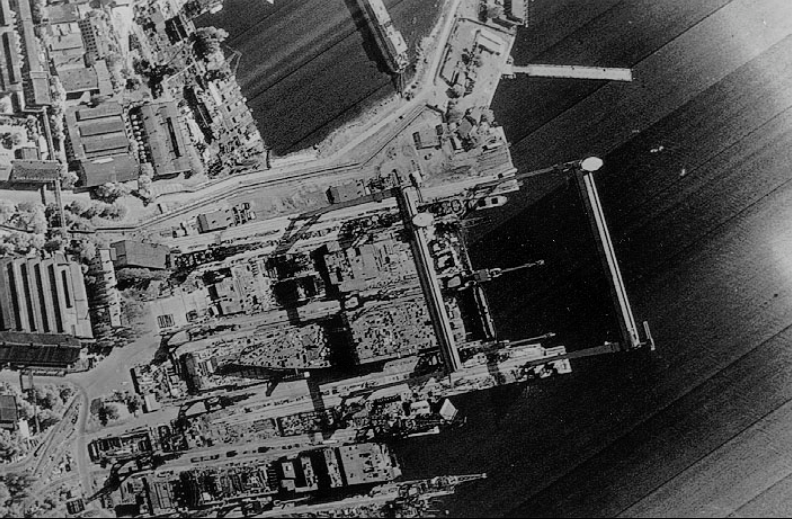
In 1978, a young CIA employee named William Kampiles was accused of selling a KH-11 System Technical Manual describing design and operation to the Soviets. Kampiles was convicted of espionage and initially sentenced to 40 years in prison.[43][44] Later, this term was reduced, and after serving 18 years, Kampiles was released in 1996.[45][46]
In 1984 Samuel Loring Morison, an intelligence analyst at the Naval Intelligence Support Center, forwarded three classified images taken by KH-11 to the publication Jane's Defence Weekly. In 1985, Morison was convicted in Federal Court on two counts of espionage and two counts of theft of government property, and was sentenced to two years in prison.[47] He was pardoned by President Clinton in 2001.[48]
In 2019 Donald Trump, then President of the United States, tweeted a previously classified[49] image of the aftermath of a failed test of Iran's Safir rocket, which some believe was taken from the USA-224 satellite.[50][51]
5. KH-11 Missions
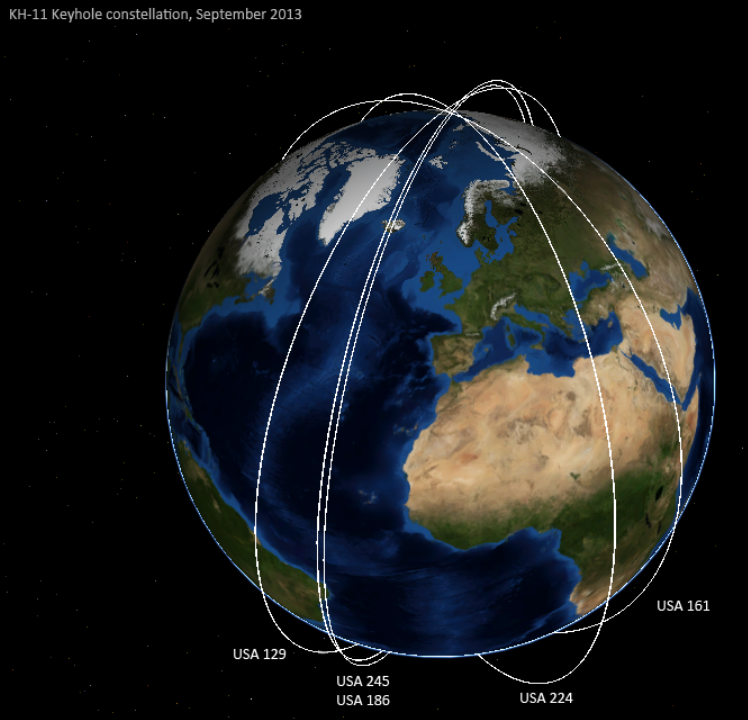
Nine KH-11 satellites were launched between 1976 and 1990 aboard Titan-3D and Titan-34D rockets, with one launch failure. For the following five satellite launches between 1992 and 2005, a Titan IV launch vehicle was used. The three most recent launches since 2011 were carried out by Delta IV Heavy rockets. The KH-11 replaced the KH-9 film return satellite, among others, the last of which was lost in a liftoff explosion in 1986.
All KH-11 satellites are in either of two standard planes in Sun-synchronous orbits. As shadows help to discern ground features, satellites in a standard plane east of a noon/midnight orbit observe the ground at local afternoon hours, while satellites in a western plane observe the ground at local morning hours.[52][53][54] Historically launches have therefore been timed to occur either about two hours before or one hour after local noon (or midnight), respectively.[31] The orbits are such that ground-tracks repeat after a certain number of days, currently each four days for the primary satellites in the East and West orbital plane.[55]
The constellation consists of two primary and two secondary satellites (one primary and one secondary per plane). The orbital planes of the two primary satellites in the East and West plane are separated by 48° to 50°. The orbital plane of the secondary satellite in the East plane is located 20° to the east of the primary satellite, while the orbital plane of the secondary satellite in the West plane is located 10° to the west of the primary satellite.[55][56]
| Name | KH-11 Block[53] |
Launch date | COSPAR ID[57] SATCAT No. |
Launch designation | Orbit | Plane[53] | Orbital decay date |
|---|---|---|---|---|---|---|---|
| OPS 5705 | 1-1 | 19 December 1976 | 1976-125A[58] 09627 |
N/A | 247 km × 533 km, i=96.9° | West | 28 January 1979 |
| OPS 4515 | 1-2 | 14 June 1978 | 1978-060A[59] 10947 |
276 km × 509 km, i=96.8° | West | 23 August 1981 | |
| OPS 2581 | 1-3 | 7 February 1980 | 1980-010A[60] 11687 |
309 km × 501 km, i=97.1° | East | 30 October 1982 | |
| OPS 3984 | 1-4 | 3 September 1981 | 1981-085A[61] 12799 |
244 km × 526 km, i=96.9° | West | 23 November 1984 | |
| OPS 9627 | 1-5 | 17 November 1982 | 1982-111A[62] 13659 |
280 km × 522 km, i=96.9° | East | 13 August 1985 | |
| USA-6 | 2-1 | 4 December 1984 | 1984-122A[63] 15423 |
335 km × 758 km, i=98°[32] | West | 10 November 1994 | |
| Unknown | 2-2 | 28 August 1985 | N/A | Failed to orbit | East | N/A | |
| USA-27 | 2-3 | 26 October 1987 | 1987-090A[64] 18441 |
300 km × 1000 km, i=98°[32] | East | 11 June 1992 | |
| USA-33 | 2-4 | 6 November 1988 | 1988-099A[65] 19625 |
300 km × 1000 km, i=98°[32] | West | 12 May 1996 | |
| USA-86 | 3-1 | 28 November 1992 | 1992-083A[66] 22251 |
408 km × 931 km, i=97.7°[67] | East | 5 June 2000 | |
| USA-116 | 3-2 | 5 December 1995 | 1995-066A[68] 23728 |
405 km × 834 km, i=97.7°[69] | East | 19 November 2008 | |
| USA-129 | 3-3 | 20 December 1996 | 1996-072A[70] 24680 |
NROL-2 | 292 km × 894 km, i=97.7°[71] | West | 24 April 2014[72] |
| USA-161 | 3-4 | 5 October 2001 | 2001-044A[73] 26934 |
NROL-14 | 309 km × 965 km, i=97.9°[74] | East | late 2014[75] |
| USA-186 | 4-1 | 19 October 2005 | 2005-042A[76] 28888 |
NROL-20 | 263 km × 450 km, i=97.9°[77] | West | |
| USA-224 | 4-2 | 20 January 2011 | 2011-002A[78] 37348 |
NROL-49 | 290 km × 985 km, i=97.9°[79] | East | |
| USA-245 | 4-3 | 28 August 2013 | 2013-043A[80] 39232 |
NROL-65 | 260 km × 1007 km, i=97.9°[81] | West | |
| USA-290 | 5-1? | 19 January 2019 | 2019-004A[82] 43941 |
NROL-71 | 395 km × 420 km, i=73.6°[83] | N/A | |
| USA-314 | 5-2? | 26 April 2021 | 2021-032A[84] 48247 |
NROL-82 | 548 km × 773 km, i=98.0°[85] | East |
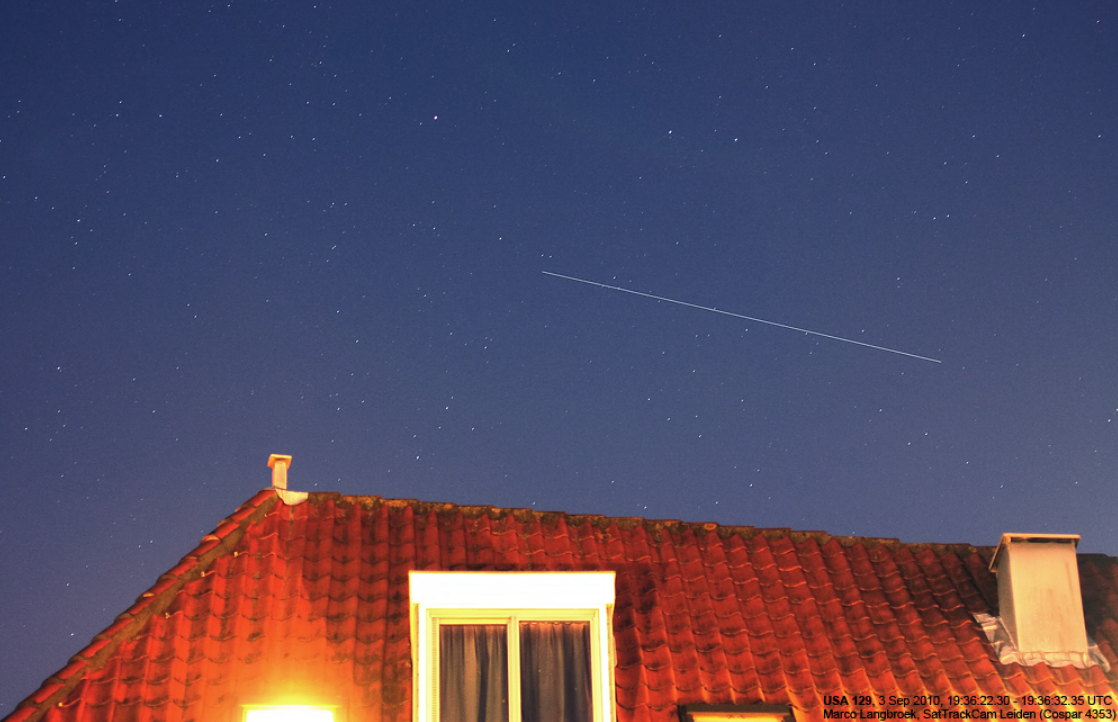
KH-11 satellites require periodic reboosts to counter atmospheric drag, or to adjust their ground track to surveillance requirements. Based on data collected by amateur observers, the following orbital characteristics of OPS 5705 were calculated by amateur skywatcher Ted Molczan.[86]
| OPS 5705 Time period |
Periapsis (AMSL) |
Apoapsis (AMSL) |
Apogee at end of period (AMSL) |
|---|---|---|---|
| 19 December 1976 – 23 December | 253 km (157 mi) | 541 km (336 mi) | 541 km (336 mi) |
| 23 December 1976 – 27 March 1977 | 348 km (216 mi) | 541 km (336 mi) | 537 km (334 mi) |
| 27 March 1977 – 19 August | 270 km (170 mi) | 537 km (334 mi) | 476 km (296 mi) |
| 19 August 1977 – 1978 January | 270 km (170 mi) | 528 km (328 mi) | 454 km (282 mi) |
| 1978 January – 28 January 1979 | 263 km (163 mi) | 534 km (332 mi) | Deorbited |
On 4 September 2010, amateur astrophotographer Ralf Vandebergh took some pictures of a KH-11 (USA-129) satellite from the ground. The pictures, despite being taken with a 10-inch aperture telescope from a range of 336 kilometers, show major details such as dishes and solar panels, as well as some elements whose function is not known.[87]
6. Cost
Estimated unit costs, including launch and in 1990 dollars, range from US$1.25 to 1.75 billion (inflation adjusted US$2.45 to 3.42 billion in 2019).[25]
According to Republican Senator Kit Bond initial budget estimates for each of the two legacy KH-11 satellites ordered from Lockheed in 2005 were higher than for the latest Nimitz-class aircraft carrier (CVN-77)[8] with its projected procurement cost of US$6.35 billion as of May 2005.[88] In 2011, after the launch of USA-224, DNRO Bruce Carlson announced that the procurement cost for the satellite had been US$2 billion under the initial budget estimate, which would put it at about US$4.4 billion (inflation adjusted US$5 billion in 2019).[9]
In April 2014, the NRO assigned a "worth more than $5 billion" to the final two legacy KH-11 satellites.[89]
7. Image Gallery
-
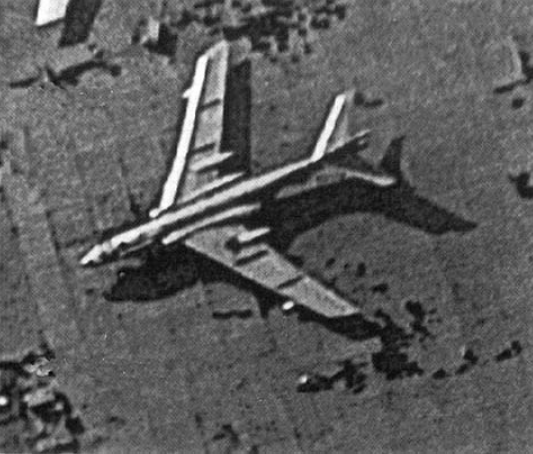
A KH-11 Block 1 image of a Xian H-6 jet bomber operated by China.
-
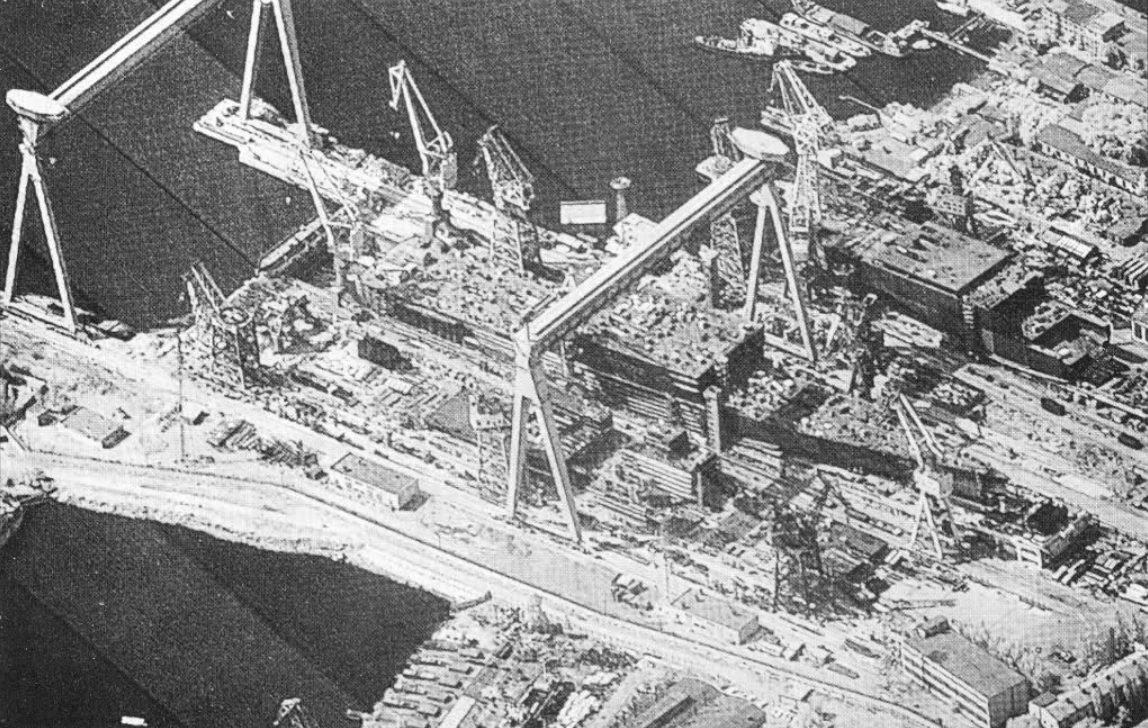
The 2nd KH-11 Block 1 image of the construction of a Kiev-class aircraft carrier leaked to Jane's in 1984.
-
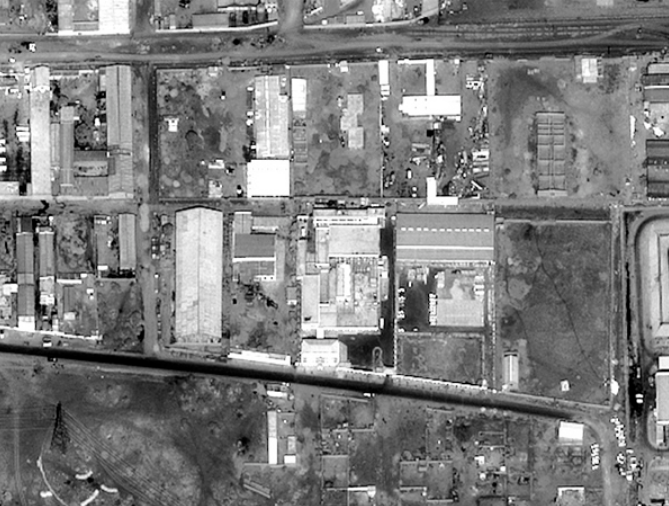
An U.S. reconnaissance satellite image of the Al-Shifa pharmaceutical factory, attributed to KH-11 Block 3.
-
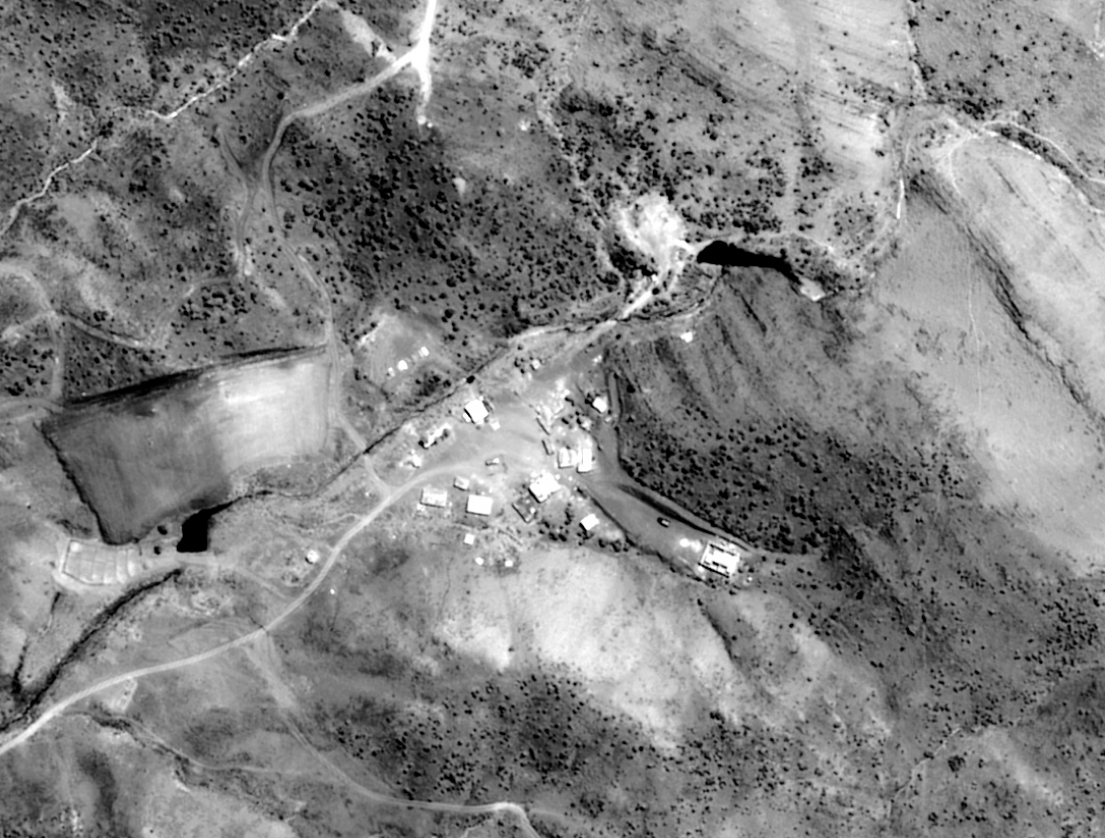
A KH-11 Block 2 image of the Zhawar Kili camp in Afghanistan.
-

A photo tweeted by President Donald Trump which is believed to have been taken by USA-224, a KH-11 Block 4 satellite.
The content is sourced from: https://handwiki.org/wiki/Engineering:KH-11_Kennen
References
- National Reconnaissance Office. GAMBIT and HEXAGON Programmatic Declassification Guidance. 23 June 2011. Released by NRO on 7 March 2012.
- Perry, Richard (1973-11-30). "A History of Satellite Reconnaissance Volume IIIb - HEXAGON". HQ Air Force Special Projects Production Facility. https://www.nro.gov/Portals/65/documents/foia/docs/HOSR/SC-2017-00006e.pdf.
- "National Reconnaissance Office Review and Redaction Guide: Version 1.0 2015 Edition". NRO. 2017-06-20. http://www.nro.gov/Portals/65/documents/foia/declass/ForAll/101917/F-2017-00008.pdf.
- Frederick L. Hofmann (1971-11-24). "KENNEN Memo: Birth of a BYEMAN Codeword". NRO. http://www.nro.gov/Portals/65/documents/foia/declass/ForAll/033017/F-2017-00026.pdf.
- Richelson, Jeffrey T. (2001). The Wizards of Langley. Inside the CIA's Directorate of Science and Technology. Westview Press, Boulder. ISBN 0-8133-4059-4. https://archive.org/details/wizardsoflangley00rich. p.199-200
- "The National Reconnaissance Office at 50 Years:A Brief history". National Reconnaissance Office. 2011-09-01. https://www.nro.gov/Portals/65/documents/history/csnr/programs/NRO_Brief_History.pdf.
- "Quasar (satellite)". associatepublisher.com. 12 March 2010. http://www.associatepublisher.com/e/q/qu/quasar_(satellite).htm.
- Iannotta, Ben (2 June 2009). "Spy-sat rescue: Obama's proposal to prevent a gap in coverage sparks debate, optimism". Defense News. http://www.defensenews.com/article/20090602/C4ISR02/906020302/Spy-sat-rescue.
- "10 Who Made a Difference in Space: Bruce Carlson, NRO Director". Space News / NRO. 7 September 2011. http://www.nro.gov/news/articles/2011/2011-01.pdf.
- Warren Ferster. "Donated space telescopes are leftover spy program failures". NBC News. http://www.nbcnews.com/id/47743440.
- Zach Rosenberg. "NRO donates spare telescopes to NASA". FlightGlobal. http://www.flightglobal.com/news/articles/nro-donates-spare-telescopes-to-nasa-372916/.
- Achenbach, Joel (4 June 2012). "NASA gets two military spy telescopes for astronomy". Washington Post. https://www.washingtonpost.com/national/health-science/nasa-gets-military-spy-telescopes-for-astronomy/2012/06/04/gJQAsT6UDV_story.html?hpid=z3.
- Overbye, Dennis (4 June 2012). "Former Spy Telescope May Explore Secrets of Dark Energy". New York Times. https://www.nytimes.com/2012/06/05/science/space/repurposed-telescope-may-explore-secrets-of-dark-energy.html?_r=1&pagewanted=all.
- Mark Wade (9 August 2003). "KH-11". Encyclopedia Astronautica. http://www.astronautix.com/craft/kh11.htm.
- The Power to Explore , NASA. In particular, Chapter XII – The Hubble Space Telescope Chapter 12, p. 483 http://history.msfc.nasa.gov/book/
- Bamford, James (13 January 1985). "America's super secret eyes in space". NY Times. https://www.nytimes.com/1985/01/13/magazine/america-s-supersecret-eyes-in-space.html.
- Sharp, David (21 February 2019). "Evolved Expendable Launch Vehicle (EELV) Phase 2 Launch Service Procurement (LSP) Draft Request for Proposals (dRFP)". FedBizOpps.gov. https://www.fbo.gov/index?s=opportunity&mode=form&id=7a3365a9c397e188a892c36ed3826a58&tab=core&_cview=1.
- Camps, Adriano (2020-07-22), "Nanosatellites and Applications to Commercial and Scientific Missions", Satellites Missions and Technologies for Geosciences (IntechOpen), doi:10.5772/intechopen.90039, ISBN 978-1-78985-995-9 https://dx.doi.org/10.5772%2Fintechopen.90039
- Day, Dwayne A. (7 February 2011). "The flight of the Big Bird (part 2)". The Space Review. http://www.thespacereview.com/article/1774/2.
- Tenet, George J. (27 September 2000). "DCI Remarks at the NRO 40th Anniversary Gala". CIA. https://www.cia.gov/news-information/speeches-testimony/2000/dci_speech_09272000_gala.html.
- Charles P. Vick (25 April 2007). "KH-12 Improved Crystal". GlobalSecurity.org. http://www.globalsecurity.org/space/systems/kh-12.htm.
- "HEXAGON (KH-9) mapping camera program and evolution". National Reconnaissance Office. 1982-12-31. https://www.nro.gov/Portals/65/documents/foia/docs/HOSR/SC-2017-00006l.pdf.
- "The GAMBIT story". National Reconnaissance Office. 1988-08-01. https://www.nro.gov/Portals/65/documents/foia/docs/HOSR/SC-2017-00006j.pdf.
- globalsecurity.org – KH-11 KENNAN, 24 April 2007 http://www.globalsecurity.org/space/systems/kh-11.htm
- "U.S. Costs of Verification and Compliance Under Pending Arms Treaties (CBO Publication #528)". CONGRESSIONAL BUDGET OFFICE, CONGRESS OF THE UNITED STATES. September 1990. http://www.cbo.gov/ftpdocs/77xx/doc7775/90-CBO-043.pdf.
- Day, Dwayne A. (26 February 2018). "Shadow dancing: the Satellite Data System". The Space Review. http://www.thespacereview.com/article/3440/1.
- Fried, D. L. (October 1966). "Optical Resolution Through a Randomly Inhomogeneous Medium for Very Long and Very Short Exposures". Journal of the Optical Society of America 56 (10): 1372–1379. doi:10.1364/JOSA.56.001372. Bibcode: 1966JOSA...56.1372F. https://dx.doi.org/10.1364%2FJOSA.56.001372
- Stoll, Clifford (1989). The Cuckoo's Egg. Doubleday. pp. 261–262. ISBN 978-0-307-81942-0. https://archive.org/details/cuckooseggtracki00stol/page/260/mode/2up.
- Dressler, Alan (4 June 2012). "The NRO-1 2.4-m Telescope". The National Academies. http://www.democratandchronicle.com/assets/pdf/A219029465.PDF.
- Day, Dwayne (22 June 2009). "Gum in the Keyhole". The Space Review. http://www.thespacereview.com/article/1400/1.
- Graham, William (20 January 2011). "Delta IV Heavy launches on debut West Coast launch with NRO L-49". nasaspaceflight.com. http://www.nasaspaceflight.com/2011/01/live-delta-iv-heavy-launch-nro-l-49/.
- Vick, Charles P. (24 April 2007). "KH-11 KENNAN: RECONNAISSANCE IMAGING SPACECRAFT". globalsecurity.org. http://www.globalsecurity.org/space/systems/kh-11.htm.
- Richelson, Jeffrey T. (14 April 1999). "National Security Archive Electronic Briefing Book No. 13: U.S. Satellite Imagery, 1960–1999". National Security Archive. http://www.gwu.edu/%7Ensarchiv/NSAEBB/NSAEBB13/index.html.
- "Satellite Mapping". National Reconnaissance Office. 26 April 1976. https://www.nro.gov/Portals/65/documents/foia/declass/ForAll/090919/F-2019-00076_C05119876.pdf.
- "KH-11 Recons Modified". Aviation Week. 9 October 1995. http://intellit.muskingum.edu/alpha_folder/a_folder/aw%26st.html.
- Molczan, Ted (8 December 2018). "NROL-71 payload speculation". satobs.org. http://www.satobs.org/seesat/Dec-2018/0058.html.
- Ray, Justin (28 July 2016). "Spy satellite infrastructure supported by successful Atlas 5 rocket launch". Spaceflight Now. https://spaceflightnow.com/2016/07/28/spy-satellite-infrastructure-supported-by-atlas-5-rocket-launch/.
- Ferster, Warren (20 October 2009). "U.S. Intelligence Official Drops Hint About Next-Gen Spy Sat Capability". spacenews.com. https://spacenews.com/us-intelligence-official-drops-hint-about-next-gen-spy-sat-capability/.
- Mortari, Daniele (7 December 2018). "On Sun-Synchronous Orbits and Associated Constellations". cranfield.ac.uk. http://naca.central.cranfield.ac.uk/dcsss/2004/B11_MSSOb.pdf.
- Molczan, Ted (7 December 2018). "NROL-71 search elements revised". satobs.org. http://www.satobs.org/seesat/Dec-2018/0040.html.
- Graham, William (7 December 2018). "ULA Delta IV-Heavy launch with NROL-71 scrubbed". nasaspaceflight.com. https://www.nasaspaceflight.com/2018/12/ula-delta-iv-heavy-set-to-launch-nrol-71/.
- "Encyclopedia Astronautica – Misty". Astronautix.com. http://www.astronautix.com/craft/misty.htm.
- Patrick Radden Keefe (February 2006). "I Spy". Wired. https://www.wired.com/wired/archive/14.02/spy_pr.html.
- "This Week in DIA History: DIA Identifies Leak of Classified KH-11 Capabilities". DIA. 25 April 2019. https://www.dia.mil/News/Articles/Article-View/Article/1824367/this-week-in-dia-history-dia-identifies-leak-of-classified-kh-11-capabilities/.
- "The Kampiles Case". JonathanPollard.org. http://www.jonathanpollard.org/kampiles.htm.
- "Record of William Peter Kampiles". Inmate Locator. Federal Bureau of Prisons. http://www.bop.gov/iloc2/InmateFinderServlet?Transaction=NameSearch&needingMoreList=false&FirstName=william&Middle=&LastName=Kampiles&Race=U&Sex=M&Age=&x=36&y=17.
- New York Times: Michael Wright and Caroline Rand Herron, "Two Years for Morison," 8 December 1985. Retrieved 11 March 2011 https://www.nytimes.com/1985/12/08/weekinreview/the-nation-two-years-for-morison.html
- New York Times: Anthony Lewis, "Abroad at Home; The Pardons in Perspective," 3 March 2001. Retrieved 11 March 2011 https://select.nytimes.com/gst/abstract.html?res=FA0B17FC3E5F0C708CDDAA0894D9404482&
- "Trump Tweets Sensitive Surveillance Image Of Iran" (in en). https://www.npr.org/2019/08/30/755994591/president-trump-tweets-sensitive-surveillance-image-of-iran.
- Bassa, Cees (30 August 2019). "Analysis of the Nahid-1/Safir launch failure satellite image". https://github.com/cbassa/satellite_analysis/blob/master/nahid1_launch_failure_analysis.ipynb.
- Oberhaus, Daniel (September 3, 2019). "Trump Tweeted a Sensitive Photo. Internet Sleuths Decoded It" (in en). Wired. ISSN 1059-1028. https://www.wired.com/story/trump-tweeted-a-sensitive-photo-internet-sleuths-decoded-it/.
- Vick, Charles P. (25 April 2007). "IMPROVED – ADVANCED CRYSTAL / IKON / 'KH-12'". globalsecurity.org. http://www.globalsecurity.org/space/systems/kh-12.htm.
- Molczan, Ted (13 July 2009). "KH-11 Lifetime". satobs.org. http://satobs.org/seesat_ref/misc/KH-11_lifetime.pdf.
- Langbroek, Marco (9 September 2013). "The orbit of USA 245 and the current KH-11 constellation". SatTrackCam Leiden. http://sattrackcam.blogspot.nl/2013/09/the-orbit-of-usa-245-and-current-kh-11.html.
- Langbroek, Marco (13 September 2013). "On USA 245 and USA 129, and the future of the Keyhole constellation: an afterthought to my previous post". SatTrackCam Leiden. http://sattrackcam.blogspot.nl/2013/09/on-usa-245-and-usa-129-and-future-of.html.
- Langbroek, Marco (16 September 2013). "Past and future of the KH-11 Keyhole/Evolved Enhanced CRYSTAL constellation (part 3)". SatTrackCam Leiden. http://sattrackcam.blogspot.nl/2013/09/past-and-future-of-kh-11-keyholeevolved.html.
- Jonathan's Space Report: List of satellite launches http://planet4589.org/space/log/
- "1976-125A". Nssdc.gsfc.nasa.gov. 2013-08-16. https://nssdc.gsfc.nasa.gov/nmc/spacecraft/display.action?id=1976-125A.
- "1978-060A". Nssdc.gsfc.nasa.gov. 2013-08-16. https://nssdc.gsfc.nasa.gov/nmc/spacecraft/display.action?id=1978-060A.
- "1980-010A". Nssdc.gsfc.nasa.gov. 2013-08-16. https://nssdc.gsfc.nasa.gov/nmc/spacecraft/display.action?id=1980-010A.
- "1981-085A". Nssdc.gsfc.nasa.gov. 2013-08-16. https://nssdc.gsfc.nasa.gov/nmc/spacecraft/display.action?id=1981-085A.
- "1982-111A". Nssdc.gsfc.nasa.gov. 2013-08-16. https://nssdc.gsfc.nasa.gov/nmc/spacecraft/display.action?id=1982-111A.
- "1984-122A". Nssdc.gsfc.nasa.gov. 2013-08-16. https://nssdc.gsfc.nasa.gov/nmc/spacecraft/display.action?id=1984-122A.
- "1987-090A". Nssdc.gsfc.nasa.gov. 2013-08-16. https://nssdc.gsfc.nasa.gov/nmc/spacecraft/display.action?id=1987-090A.
- "1988-099A". Nssdc.gsfc.nasa.gov. 2013-08-16. https://nssdc.gsfc.nasa.gov/nmc/spacecraft/display.action?id=1988-099A.
- "1992-083A". Nssdc.gsfc.nasa.gov. 2013-08-16. https://nssdc.gsfc.nasa.gov/nmc/spacecraft/display.action?id=1992-083A.
- "USA 86 – Orbit Data". heavens-above.com. 23 May 2002. http://www.heavens-above.com/orbit.aspx?satid=22251.
- "1995-066A". Nssdc.gsfc.nasa.gov. 2013-08-16. https://nssdc.gsfc.nasa.gov/nmc/spacecraft/display.action?id=1995-066A.
- "USA 116 – Orbit Data". heavens-above.com. 18 November 2008. http://www.heavens-above.com/orbitdisplay.asp?satid=23728.
- "1996-072A". Nssdc.gsfc.nasa.gov. 2013-08-16. https://nssdc.gsfc.nasa.gov/nmc/spacecraft/display.action?id=1996-072A.
- "USA 129 – Orbit Data". heavens-above.com. 19 February 2011. http://www.heavens-above.com/orbit.aspx?satid=24680.
- "USA 224 recovered, USA 186 still drifting, and looking for GPS IIF-6 20 minutes after launch". Marco Langbroek. 2014-05-21. http://sattrackcam.blogspot.de/search/label/USA%20129.
- "2001-044A". Nssdc.gsfc.nasa.gov. https://nssdc.gsfc.nasa.gov/nmc/spacecraft/display.action?id=2001-044A.
- "USA 161 – Orbit Data". heavens-above.com. 15 October 2010. http://www.heavens-above.com/orbit.aspx?satid=26934.
- "USA 224 recovered: an update of the KH-11 constellation". Marco Langbroek. 2016-06-30. https://sattrackcam.blogspot.com/2016/06/usa-224-recovered-update-of-kh-11.html.
- "2005-042A". Nssdc.gsfc.nasa.gov. https://nssdc.gsfc.nasa.gov/nmc/spacecraft/display.action?id=2005-042A.
- "USA 186 – Orbit Data". heavens-above.com. 4 March 2019. http://www.heavens-above.com/orbit.aspx?satid=28888.
- "2011-002A". Nssdc.gsfc.nasa.gov. https://nssdc.gsfc.nasa.gov/nmc/spacecraft/display.action?id=2011-002A.
- "USA 224 – Orbit Data". heavens-above.com. 4 February 2011. http://www.heavens-above.com/orbit.aspx?satid=37348.
- "2013-043A". Nssdc.gsfc.nasa.gov. https://nssdc.gsfc.nasa.gov/nmc/spacecraft/display.action?id=2013-043A.
- "USA 245 – Orbit Data". heavens-above.com. 22 September 2013. http://www.heavens-above.com/orbit.aspx?satid=39232.
- "2019-004A". Nssdc.gsfc.nasa.gov. https://nssdc.gsfc.nasa.gov/nmc/spacecraft/display.action?id=2019-004A.
- "USA 290 – Orbit Data". heavens-above.com. 3 February 2019. http://www.heavens-above.com/orbit.aspx?satid=43941.
- "2021-031A". Nssdc.gsfc.nasa.gov. https://nssdc.gsfc.nasa.gov/nmc/spacecraft/display.action?id=2021-032A.
- "USA 314 – Orbit Data". heavens-above.com. 22 May 2021. http://www.heavens-above.com/orbit.aspx?satid=48247.
- Molczan, Ted (4 December 2002). "Examples of other 'fake space' claims by governments?". fas.org. https://fas.org/spp/military/program/imint/tm120402.html.
- "Never Before Seen View of a Keyhole Satellites?". Space Safety Magazine. 2013-09-26. http://www.spacesafetymagazine.com/2013/09/26/view-keyhole-satellite/.
- O'Rourke, Ronald (25 May 2005). "Navy CVN-21 Aircraft Carrier Program: Background and Issues for Congress". Naval Historical Center. http://www.history.navy.mil/library/online/navycvn21.htm.
- "Dr. Darrell Zimbelman Receives 2014 Charyk Award, Release # 02-14". National Reconnaissance Office. 8 April 2014. http://www.nro.gov/news/press/2014/02-14.pdf.

